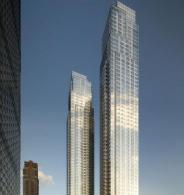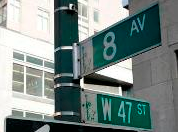
We'll admit it: there are better places to go for economic analysis than the Luxury Rentals Manhattan blog. Which is fine, since we're mostly about point people towards no-fee rental listings and NYC rentals and less about detailed microeconomic position papers. Everyone's cool with that. But it has been interesting, during the tenuous but ongoing comeback in the Manhattan rental market, to se basic economic fundamentals getting a real world star turn -- and behaving more or less as the textbooks say they should. If you've been reading the blog -- or even just following Manhattan real estate -- you've seen it, too. From the way that prices have spiked as vacancies have gone down to the near-disappearance of concessions and incentives on NYC rentals, Manhattan real estate has been exceptionally logical of late. Not always kind, and certainly enough to send many renters looking back wistfully at the good old days of the renter's market, but logical. But if there's something reassuring in that logic, there's also something somewhat menacing about it, considering that what looks like a possible inventory crunch in the Manhattan rental market could send prices spiking in months to come. Economic rules: can't live with 'em, can't... well, you know the rest.
The issue, here is that as new construction mega-rentals like Silver Towers (above) and 808 Columbus Avenue continue to fill up -- often with reduced concessions that are among the only concessions still to be found -- new inventory has not necessarily popped up to sate continued renter demand. While most of the attention in the real estate press has been paid to the lack of new condo development in Manhattan, the same is also true of new luxury rental development. And a lack of new NYC rental listings coming on-line over the next year could have, well, about the effect that economic basics would suggest they would.
"Many of these [new luxury rental buildings] are approaching capacity, with occupancies above 80 percent and some sold out," the New York Observer's Matt Chaban writes. "And with the aforementioned lack of new development, rents could go spiraling upward. Incentives will vanish and higher rents will spill over into older buildings, as well. This reminds us once again of great irony of New York City apartments: When housing is down, rents often tend to be up. As people in the market for a new home continue to put off buying one until prices settle down, it means more renters and more demand, which drives rents ever skyward."
Does this mean that price hikes are inevitable? No, it doesn't -- nothing is inevitable in New York City real estate, except for a continued strong demand for places to live. But that single, signal inevitability is something to think about -- and a reason, as Chaban's piece suggests, that browsing Manhattan rental listings now is a better idea than waiting until the summer. Supply isn't going to increase between then and now, and you already know about demand. There's an economic rule about the way those work, and we're sad to say that it doesn't favor the renters. Or, if you'd like it shorter: better to rent soon than look later.





